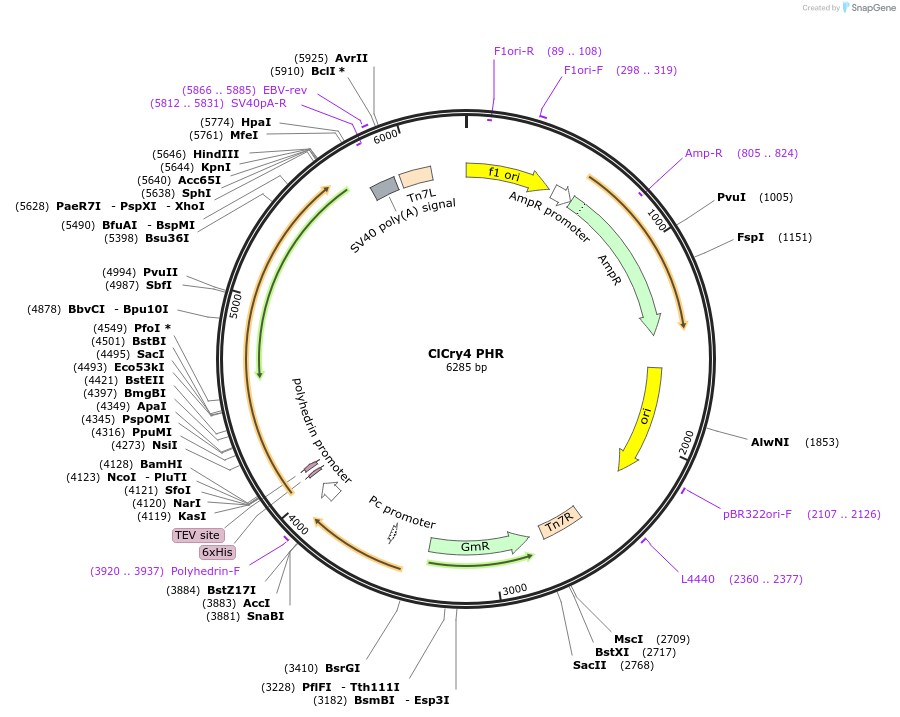ClCry4 PHR
(Plasmid
#160552)
-
PurposeExpression of protein for various experiments including finding interaction partners
-
Depositing Lab
-
Sequence Information
Ordering
| Item | Catalog # | Description | Quantity | Price (USD) | |
|---|---|---|---|---|---|
| Plasmid | 160552 | Standard format: Plasmid sent in bacteria as agar stab | 1 | $89 | |
Backbone
-
Vector backbonePfast HTb
-
Backbone manufacturerInvitrogen
- Backbone size w/o insert (bp) 4856
- Total vector size (bp) 6400
-
Vector typeInsect Expression
-
Selectable markersGentamicin
Growth in Bacteria
-
Bacterial Resistance(s)Ampicillin, 100 μg/mL
-
Growth Temperature37°C
-
Growth Strain(s)DH5alpha
-
Copy numberLow Copy
Gene/Insert
-
Gene/Insert nameClcry4 HR
-
Alt namePigeon Cry4
-
SpeciesC.livia
-
Insert Size (bp)1491
-
Tag
/ Fusion Protein
- Hexa his
Cloning Information
- Cloning method Restriction Enzyme
- 5′ cloning site BamHI (unknown if destroyed)
- 3′ cloning site XhoI (unknown if destroyed)
- 5′ sequencing primer pfastbac forward
- 3′ sequencing primer pfastbac reverse
- (Common Sequencing Primers)
Terms and Licenses
-
Academic/Nonprofit Terms
-
Industry Terms
- Not Available to Industry
Trademarks:
- Zeocin® is an InvivoGen trademark.
These plasmids were created by your colleagues. Please acknowledge the Principal Investigator, cite the article in which the plasmids were described, and include Addgene in the Materials and Methods of your future publications.
-
For your Materials & Methods section:
ClCry4 PHR was a gift from Joseph Takahashi (Addgene plasmid # 160552 ; http://n2t.net/addgene:160552 ; RRID:Addgene_160552) -
For your References section:
Chemical and structural analysis of a photoactive vertebrate cryptochrome from pigeon. Zoltowski BD, Chelliah Y, Wickramaratne A, Jarocha L, Karki N, Xu W, Mouritsen H, Hore PJ, Hibbs RE, Green CB, Takahashi JS. Proc Natl Acad Sci U S A. 2019 Sep 24;116(39):19449-19457. doi: 10.1073/pnas.1907875116. Epub 2019 Sep 4. 10.1073/pnas.1907875116 PubMed 31484780



